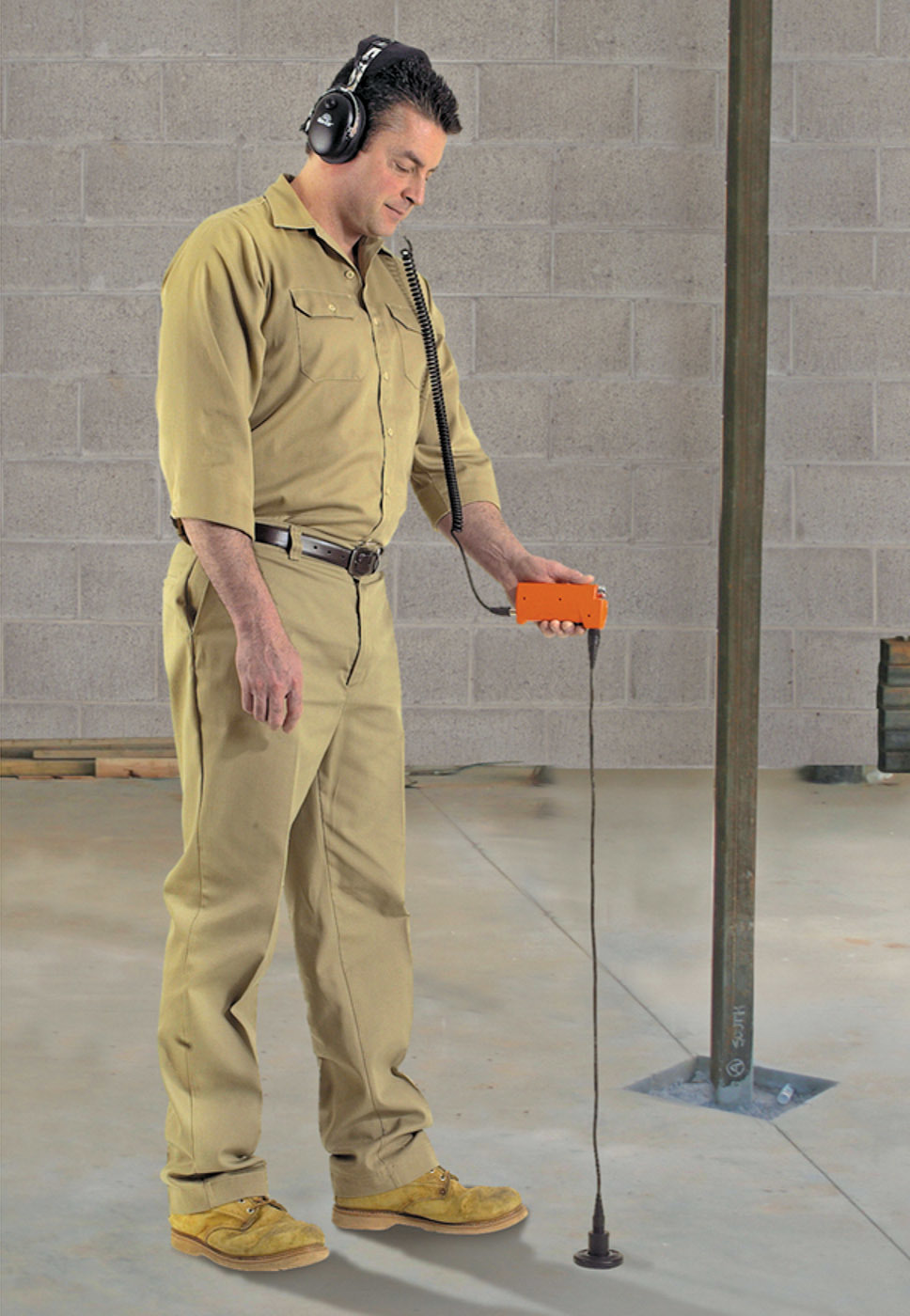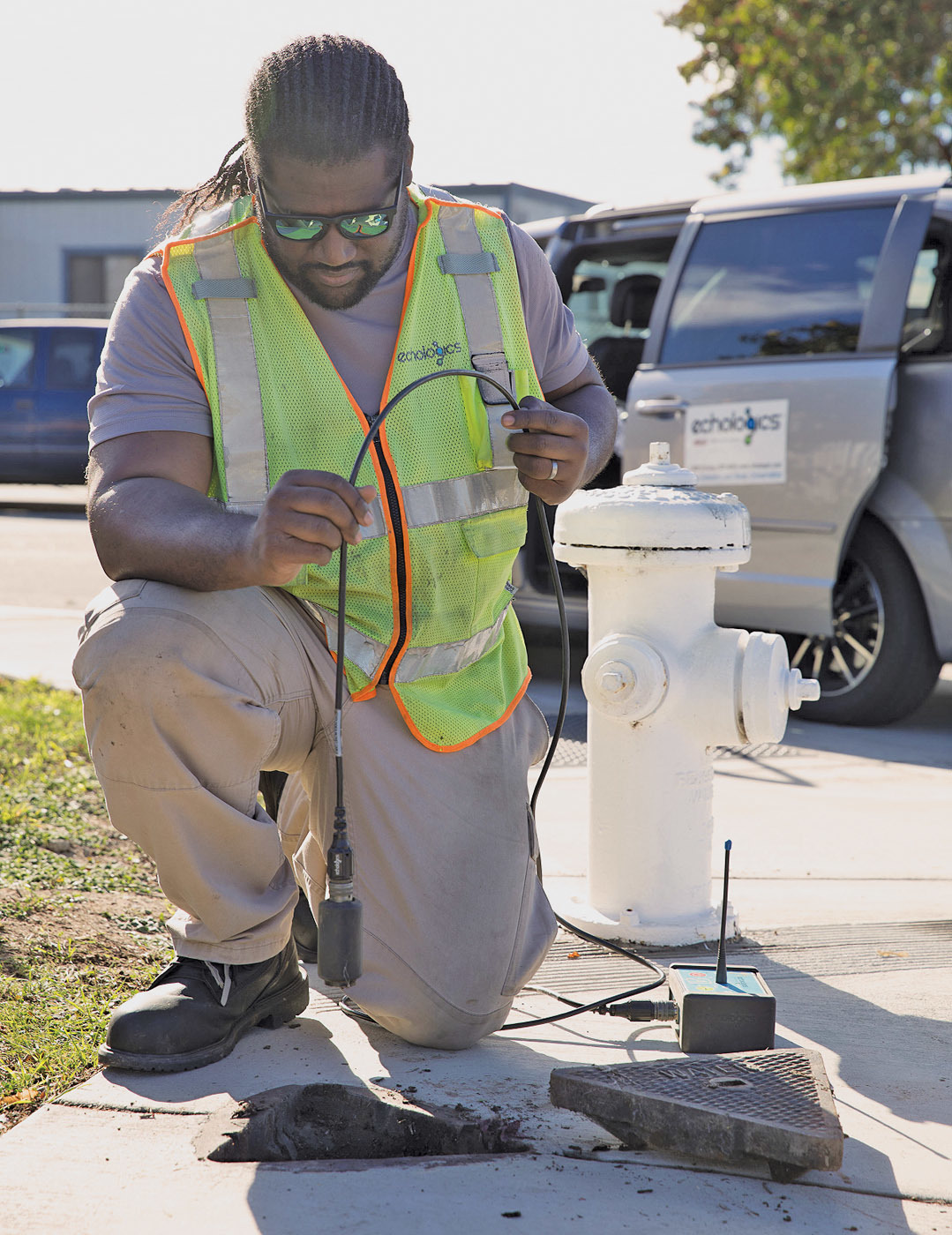Interested in Location/Detection?
Get Location/Detection articles, news and videos right in your inbox! Sign up now.
Location/Detection + Get AlertsLeak detection system saves money for Texas school
Problem:
A leak beneath Anna Middle School in Anna, Texas, caused water to surface in the parking lot. The problem presented potentially costly demolition and repairs.
Solution:
The school called Spencer Plumbing, and a technician used a Gen-Ear LE water leak detection system from General Pipe Cleaners/General Wire Spring. Compact and lightweight, the unit uses an advanced acoustical leak detection system to quickly and accurately locate leaks in cast iron, copper, steel and PVC lines. The equipment quickly found two distinct problems. “We fixed the small inside leak without major disruption,” says Bryan Spencer, owner of Spencer Plumbing. He then showed how the serious outside leak actually channeled water down a ditch to where it was surfacing in the parking lot.
Result:
“We pinpointed problems so clearly and quickly that the customer saved thousands in unnecessary demolition and repair work,” Spencer says. And the new equipment’s learning curve proved surprisingly short. “Once we learned to identify different types of leak sounds, we began using the system immediately.” 800-245-6200; www.drainbrain.com.

Acoustic technology helps assess water utility pipeline health
Problem:
Netzgesellschaft Düsseldorf mbH (NGD), which is responsible for energy and water supply for the North Rhine-Westphalia capital of Düsseldorf, Germany, has a significant number of steel and cast iron transmission and distribution mains that are due for replacement. Without historical data and with limited capacity for underground work to assess its structural condition and remaining service life, NGD needed a cost-effective solution to prioritize its pipeline rehabilitation and replacement decisions.
Solution:
The utility used Echologics ePulse condition assessment technology from Mueller Water Products because of its ability to locate leaks noninvasively while assessing actual pipe condition without any excavation. This is accomplished by attaching acoustic sensors to existing contact points, such as fire hydrants or valves, or through direct contact with a pipe and inducing a sound in the pipeline. The acoustic sensors capture the time it takes the sound wave to travel between two sensor stations. The speed at which the sound wave travels is dictated by the condition of the pipe wall. The data feeds through algorithmic analysis to measure the strength of the pipe wall — an ideal measure of actual pipe condition.
Result:
After analyzing a little over 17 miles of pipeline, ePulse pinpointed three leaks and determined that only 30% of the cast iron trunk mains needed replacing within the year. The degradation of wall thickness varied from 15% to 34% on the DN1220 pipes and 15% to 22% on the DN600 mains. The utility can now prioritize pipe replacement and plans to remeasure the moderate pipes after five years to evaluate any change in structural wall thickness. 800-423-1323; www.muellerwaterproducts.com.






